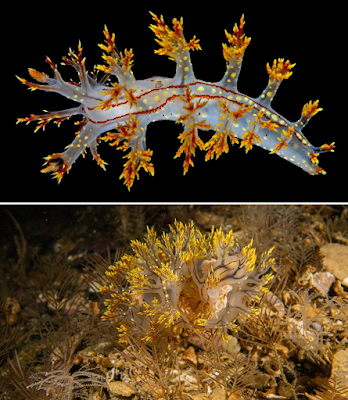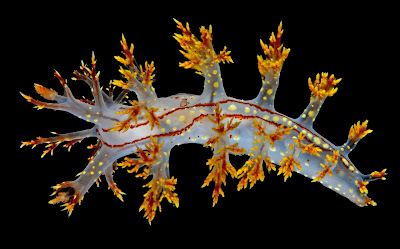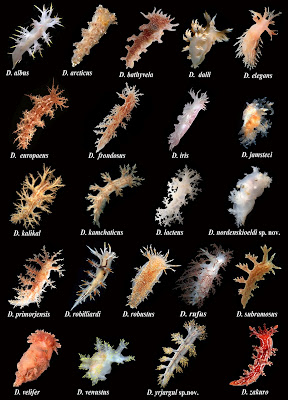[Most Recent Entries] [Calendar View]
Saturday, September 19th, 2020
| Time | Event | ||||||||
| 12:27p | [Paleontology • 2020] Extinction and Dawn of the Modern World in the Carnian (Late Triassic) Abstract The Carnian Pluvial Episode (Late Triassic) was a time of global environmental changes and possibly substantial coeval volcanism. The extent of the biological turnover in marine and terrestrial ecosystems is not well understood. Here, we present a meta-analysis of fossil data that suggests a substantial reduction in generic and species richness and the disappearance of 33% of marine genera. This crisis triggered major radiations. In the sea, the rise of the first scleractinian reefs and rock-forming calcareous nannofossils points to substantial changes in ocean chemistry. On land, there were major diversifications and originations of conifers, insects, dinosaurs, crocodiles, lizards, turtles, and mammals. Although there is uncertainty on the precise age of some of the recorded biological changes, these observations indicate that the Carnian Pluvial Episode was linked to a major extinction event and might have been the trigger of the spectacular radiation of many key groups that dominate modern ecosystems.
Jacopo Dal Corso, Massimo Bernardi, Yadong Sun, Haijun Song, Leyla J. Seyfullah, Nereo Preto, Piero Gianolla, Alastair Ruffell, Evelyn Kustatscher, Guido Roghi, Agostino Merico, Sönke Hohn, Alexander R. Schmidt, Andrea Marzoli, Robert J. Newton, Paul B. Wignall and Michael J. Benton. 2020. Extinction and Dawn of the Modern World in the Carnian (Late Triassic). Science Advances. 6(38): eaba0099. DOI: 10.1126/sciadv.aba0099 Newly discovered mass extinction event triggered the dawn of the dinosaurs Adriana C. Mancuso, Cecilia A. Benavente, Randall B. Irmis and Roland Mundil. 2020. Evidence for the Carnian Pluvial Episode in Gondwana: New multiproxy climate records and their bearing on early dinosaur diversification. Gondwana Research. 86; 104-125. DOI: 10.1016/j.gr.2020.05.009 Abstract: Dinosaurs diversified in two steps during the Triassic. They originated about 245 Ma, during the recovery from the Permian-Triassic mass extinction, and then remained insignificant until they exploded in diversity and ecological importance during the Late Triassic. Hitherto, this Late Triassic explosion was poorly constrained and poorly dated. Here we provide evidence that it followed the Carnian Pluvial Episode (CPE), dated to 234–232 Ma, a time when climates switched from arid to humid and back to arid again. Our evidence comes from a combined analysis of skeletal evidence and footprint occurrences, and especially from the exquisitely dated ichnofaunas of the Italian Dolomites. These provide evidence of tetrapod faunal compositions through the Carnian and Norian, and show that dinosaur footprints appear exactly at the time of the CPE. We argue then that dinosaurs diversified explosively in the mid Carnian, at a time of major climate and floral change and the extinction of key herbivores, which the dinosaurs opportunistically replaced. Massimo Bernardi, Piero Gianolla, Fabio Massimo Petti, Paolo Mietto and Michael J. Benton. 2018. Dinosaur Diversification linked with the Carnian Pluvial Episode. Nature Communications. 9: 1499 . DOI: 10.1038/s41467-018-03996-1 | ||||||||
| 12:45p | [Mollusca • 2020] A Synoptic Review of the Family Dendronotidae (Nudibranchia): A Multilevel Organismal Diversity Approach
Abstract A synoptic review of the family Dendronotidae is presented based on morphological and molecular data. Three genera are recognized: Dendronotus, Pseudobornella, and Cabangus gen. nov. Two new Dendronotus species are described, D. yrjargul sp. nov. and D. nordenskioeldi sp. nov., which reveal fine-scale differences. Dendronotus yrjargul sp. nov. from mid-Norway and the Arctic regions is a sister species to the North Pacific D. kalikal. These two species are showing clear morphological and ontogenetic differences but are close in genetic distance. In contrast, Dendronotus nordenskioeldi sp. nov. from the Laptev Sea is externally similar to the white morphs of D. lacteus or D. frondosus, but according to the molecular data and radular morphology it is distinct from any of its congenerics. Comparison of molecular and morphological data of D. niveus from the type locality (White Sea) and material from other localities with those from the American North Atlantic coast (type locality of D. elegans) reveals their substantial similarity. Therefore, D. niveus is considered a junior synonym of D. elegans. The present review of the family Dendronotidae contributes to a general discussion on the species concepts and on a recent proposal of multilevel organismal diversity. Keywords: Cabangus; Dendronotus; Pseudobornella; molecular phylogeny; species problem; taxonomy Dendronotus yrjargul sp. nov. Etymology. From Norwegian yrjar (= old name for the type locality in Ørland) and gul (= yellow) meaning “yellow/golden of Ørland” in reference to the remarkable habitus of this species. Distribution. From Norwegian Sea to Kara Sea. Dendronotus nordenskioeldi sp. nov. Etymology. In honour of Baron Nils Adolf Erik Nordenskiöld, outstanding Arctic explorer, geologist, and mineralogist. The Laptev Sea had been originally named “Nordenskiöld Sea”, after this Arctic explorer. Distribution. So far known only from the Laptev Sea.
Genus Dendronotus Alder & Hancock, 1845 Type species. Dendronotus frondosus (Ascanius, 1774) Dendronotus albopunctatus Robilliard, 1972 Dendronotus albus MacFarland, 1966 Dendronotus arcticus Korshunova, Sanamyan, Zimina, Fletcher & Martynov, 2016 Dendronotus bathyvela Martynov, Fujiwara, Tsuchida, R. Nakano, N. Sanamyan, K. Sanamyan, Fletcher & Korshunova, 2020 Dendronotus claguei Valdés, Lundsten & Wilson, 2018 Dendronotus comteti Valdés & Bouchet, 1998 Dendronotus dalli Bergh, 1879 Dendronotus elegans Verrill, 1880 Dendronotus europaeus Korshunova, Martynov, Bakken & Picton, 2017 Dendronotus frondosus (Ascanius, 1774) Dendronotus gracilis Baba, 1949 Dendronotus iris Cooper, 1863 Dendronotus jamsteci Martynov, Fujiwara, Tsuchida, R. Nakano, N. Sanamyan, K. Sanamyan, Fletcher & Korshunova, 2020 Dendronotus kalikal Ekimova, Korshunova, Shepetov, Neretina, Sanamyan & Martynov, 2015 Dendronotus kamchaticus Ekimova, Korshunova, Shepetov, Neretina, Sanamyan & Martynov, 2015 Dendronotus lacteus (Thompson, 1840) Dendronotus nanus Marcus & Marcus, 1967 Dendronotus patricki Stout, Wilson & Valdés, 2011 Dendronotus primorjensis Martynov, Sanamyan & Korshunova, 2015 Dendronotus purpureus Bergh, 1879 Dendronotus robilliardi Korshunova, Sanamyan, Zimina, Fletcher & Martynov, 2016 Dendronotus robustus Verrill, 1870 Dendronotus rufus O’Donoghue, 1921 Dendronotus subramosus MacFarland, 1966 Dendronotus velifer G.O. Sars, 1878 Dendronotus venustus MacFarland, 1966 Dendronotus zakuro Martynov, Fujiwara, Tsuchida, R. Nakano, N. Sanamyan, K. Sanamyan, Fletcher & Korshunova, 2020 Genus Cabangus gen. nov. Type species. Dendronotus regius Pola & Stout, 2008 Etymology. From the Indonesian word “cabang” meaning “branch” in reference to this genus as “dendronotids of the tropics” and to respect the great contribution of the Indonesian fauna to global marine biodiversity (e.g., Hoeksema, 2007). Cabangus noahi (Pola & Stout, 2008) comb. nov. Dendronotus noahi Pola & Stout, 2008: 55–63, figs 6A, B. Distribution. Papua New Guinea, north coast, outer barrier reef, Bagabag Island, Bismarck Sea. Cabangus regius (Pola & Stout, 2008) comb. nov. Dendronotus regius Pola & Stout, 2008: 46– 54, Figs 1–5. Distribution. Tropical Indo-west Pacific. Genus Pseudobornella Baba, 1932 Type species. P. orientalis Baba, 1932 ... Tatiana Korshunova, Torkild Bakken, Viktor V. Grøtan, Kjetil B. Johnson, Kennet Lundin and Alexander Martynov. 2020. A Synoptic Review of the Family Dendronotidae (Mollusca: Nudibranchia): A Multilevel Organismal Diversity Approach. Contributions to Zoology. DOI: 10.1163/18759866-BJA10014 Den gyldne nakensneglen fra Ørland, en ny og ukjent art | ||||||||
| 1:06p | [Herpetology • 2020] Cnemaspis selenolagus • A New Species of Cnemaspis Strauch (Squamata: Gekkonidae) of the C. siamensis Group from Tenasserim Mountains, Thailand
Abstract An integrative taxonomic analysis recovered the new species Cnemaspis selenolagus sp. nov. of the C. siamensis group as the sister species to C. punctatonuchalis. The new species was discovered in mountain evergreen tropical forests of in Suan Phueng District of Ratchaburi Province, western Thailand. Additionally, the analysis recovered a deep genetic divergence between northern and southern clades within the C. siamensis group that occur on opposite sides of the Isthmus of Kra—a well-known biogeographic region of cladogenic turnover. The description of C. selenolagus sp. nov. brings the total number of species of Cnemaspis in Thailand to 16, 11 of which compose the C. siamensis group—a lineage endemic to the Thai-Malay Peninsula. This underscores the physiographic complexity of this narrow peninsula in that it can support a large number of closely related species in only the northern two-thirds of its length. Keywords: Reptilia, Integrative taxonomy, Thailand, biogeography, taxonomy, Isthmus of Kra, Ratchaburi Province
Cnemaspis selenolagus sp. nov. Moon Rabbit Rock Gecko | จิ้งจกนิ้วยาวสวนผึ้ง Diagnosis. Cnemaspis selenolagus sp. nov. can be separated from all other species of Cnemaspis by the unique combination of having a maximum SVL of 36.2 mm; 10–11 supralabias; 10 infralabials; smooth ventral scales; six or seven continuous, elongate, precloacal pores in males; 16–18 non-linearly arranged paravertebral tubercles; tubercles absent from lower flanks; a patch of enlarged spine-like tubercles on flanks; no lateral caudal furrows; ventrolaeral caudal tubercles absent; lateral caudal tubercle row present; caudal tubercles note restricted to a single paravertebral row; smooth subcaudals; caudal tubercles encircle tail; no enlarged median subcaudal row; two postcloacal tubercles in males; no enlarged femoral scales; no shield-like subtibial scales; subtibial scales smooth and enlarged submetatarsals on first toe. These characters are scored across all species of Cnemapsis in Grismer et al. (2014), Wood et al. (2017), and Ampai et al. (2019) and across all species in the C. siamensis group along with diagnostic color pattern characters in Table 2. Distribution. Cnemaspis selenolagus sp. nov. is to date known only from the type locality of Khao Laem Mt., Suan Phueng District, Ratchaburi Province, north Tenasserim Mountains, western Thailand (Fig. 1). Natural History. Cnemaspis selenolagus sp. nov. is a habitat generalist that was observed on both granite rocks and boulders and large tree trunks. Specimens occur in evergreen mixed montane tropical forest they were commonly observed at night taking refuge in the crevices of large boulders or beneath the bark of large trees, usually in wet areas close to rocky streams that are shaded during the day (Fig. 5). Like most other Cnemaspis, C. selenolagus sp. nov. is adept at substrate matching and closely resembles the colors of the lichens or dry moss covering the surfaces of the rocks or tree bark on which it is found (Fig. 4C) during the day. At night, specimens take refuge in the crevices of large rocks or on tree branches. Etymology. The new species name “selenolagus” is a Latinized noun of masculine gender given in apposition and is derived from Greek words “selene” (σελήνη) for “moon”, and “lagos” (λαγός) for “rabbit”, “hare”, and literally means “moon rabbit”. The name honors the Rabbit in the Moon Foundation, located in Suan Phueng, Ratchaburi, Thailand, in recognition of the Foundation’s efforts in environmental education and conservation in Thailand, and acknowledging their help and support in organizing our fieldwork in the Suan Phueng area. The recommended vernacular name in English is Suan Phueng Rock Gecko; in Thai is Jing Jok Niew Yao Suan Phueng (จิ้งจกนิ้วยาวสวนผึ้ง). L. Lee Grismer, Platon V. Yushchenko, Parinya Pawangkhanant, Roman A. Nazarov, Mali Naiduangchan, Chatmongkon Suwannapoom and Nikolay A. Poyarkov. 2020. A New Species of Cnemaspis Strauch (Squamata: Gekkonidae) of the C. siamensis Group from Tenasserim Mountains, Thailand. Zootaxa. 4852(5); 547–564. DOI: 10.11646/zootaxa.4852.5.3 |
| << Previous Day |
2020/09/19 [Calendar] |
Next Day >> |















